Journal #30: Crunch Time
by Miles Raymer
The subject of consciousness is a fascinating field of scientific study, one about which I’ve done a fair amount of amateur research. Consciousness is notoriously difficult to define, partially because it’s extremely difficult to locate the precise level of biological organization at which consciousness takes place. We know the brain is the physical substrate that generates our experience of mind, but can’t reliably link particular brain states to corresponding emotions or thoughts. Technologically, we simply haven’t reached the point where someone can look at a brain scan and pinpoint the activity that constitutes conscious processes (as opposed to the myriad other nonconscious processes that are constantly taking place). Some think locating consciousness in this way might be impossible altogether, though I do not count myself among them. It has also become clear that consciousness is not an all or nothing deal––animal consciousness occurs across a wide continuum, from simple sensory feedback all the way up to complex memory and future projection.
From a phenomenological perspective––our internal experience of consciousness going about our daily lives––we not only drift in and out of consciousness itself (sleep vs. waking life), but also traverse varying levels of attention within the scope of conscious cognition and action. Our ability to project and alter images in our mind’s eye, to manipulate concepts and symbols using nothing more than our imagination, is without doubt humanity’s most precious and unique gift.
But for all its grandiosity and utility, consciousness also has its drawbacks. Our attention regularly fluctuates between the remembered past, the experienced present, and the imagined future, and there’s no firm standard for what constitutes a healthy balance between them. How much should we ruminate about past mistakes and achievements, map out future fears and hopes, or just try to live in the moment? Without the proper balance, we can go through days, weeks, even years without paying attention to crucial elements of our experience of ourselves. We can lapse into revery or descend into despair as quickly as a hummingbird’s heartbeat. We can completely ignore what we are doing with various parts of our bodies, or momentarily forget we have a body at all.
Last Monday, this issue was more evident to me than ever when I, with what I can only describe as intent (thoughtless though it was), put my hand into the operating blade of a hedge trimmer.
I’ve no idea where my conscious mind was in that moment, but it certainly wasn’t where it needed to be. The trimmer did not malfunction, although its previous owner had taped the second safety trigger so it could be operated with one hand (no excuse for my carelessness). I did not slip and accidentally put my hand in peril. I was not distracted by some external person or event. I simply decided to try using my hand to clear away some brush just inches away from the trimmer’s rapidly chopping blades. This was, by all accounts, remarkably stupid, and yet I can attest to have lived through a moment in which it seemed not only the logical thing to do, but also the necessary thing. It wasn’t until my hand snapped back and I began to feel numbness in two of my fingers that it occurred to me I might be putting myself in danger.
With varying levels of seriousness, we all have moments like this, when no more than an instant after the fact we are furiously racking our minds for some rational explanation for our idiocy. The short answer is that being inside a human brain is complicated, dangerous, and often quite a lot of fun. Striking the proper balance between awareness of our emotions, our physical position and surroundings, and our relationships with other living things is a lifelong task, and not one that admits perfection. Sometimes we get a wake-up call that demands a shift in perspective; if we’re lucky, it happens without lasting damage. In my case, I’m healing up just fine after a probably unnecessary but resoundingly reassuring trip to the ER. Just a skin flap that bled a lot. But I could have lost a finger or two.
When I got home, the first thing I did was un-tape that safety trigger.
While I was out for a couple days letting my finger heal, Dan, Sean and Matt did some great work. They poured the concrete for our new porch landings, and made major progress on the roof tie-in with the new garage.
I was back to work by last Wednesday, which happened to be the day of Humboldt’s first proper rain since the end of June. I wish we could have been happier to see the California drought break (at least up north), but instead we were anxious about protecting our vulnerable construction site. Dan anticipated the rain and bought a huge sheet of plastic to protect our framing and the floor, so we spent the latter part of Wednesday covering the exposed portions of the house in a fashion that seemed adequate.
As soon as the guys left for the afternoon, the sky decided it was time to make up for an extra dry summer. Torrents of water began pelting the house, and soon huge pools of water collected where the plastic sunk down between the rafters. I spent two frustrating hours trying to improve the drainage, but to not avail. Every time I plugged a hole or sent a puddle away from the house, water began invading a new weak spot. I’m lucky enough to never have had to defend my home against overwhelming disaster, but just this small taste of panic gave me insight into the vast sense of helplessness that invades the human heart in such moments. Afraid, I laid bare the boy in me, lashing out at my girlfriend Jessie when she was only trying to help. I battled and grumbled, and battled some more. Then I accepted defeat and sought atonement for my puerile behavior.
A big part of my stress was that I didn’t have a clear idea of how much was at stake. Only about a quarter of the new floor was exposed to rainfall, but I’d failed to ask Dan and Sean how damaging water might be, and thankfully it turns out I grossly overestimated the risk. Water on the floor isn’t ideal, but neither is it especially harmful. The plywood is water resistant, and everything below is built with pressure treated wood, which withstands rot. We will also eventually cut vents into the floor to allow airflow to slowly ameliorate whatever wetness seeps beneath the plywood.
Even though last Wednesday’s rain wasn’t catastrophic, it was definitely a sign that we needed to haul ass to get plywood on the roof. Dan looked at the weather forecast and saw rain projected for the following Wednesday (today). So we resolved to work as hard as we could to get the roof set and nailed before the next big rain. It was crunch time.
Roof overhangs need outriggers for support, so Sean showed me how to cut out notches so we could place several outriggers on the roof’s north side. This was the most advanced use of the Skilsaw I’ve yet encountered, and required a lot of focus and care to do properly. After Sean marked the space for the notch, he showed me how to use the saw to cut back and forth multiple times, cutting the wood into small fragments that could be easily removed.
Next, I used a hammer and chisel to get rid of the excess wood, leaving a clean notch for the outrigger to slide into.
Once the notches were ready, Sean and I set the outriggers and nailed them in.
I really enjoyed this particular carpentry task, probably because it’s a combination of the basic skills I’ve been slowly learning. You have to measure and mark precisely, then use a powerful tool in a careful, deliberate way. Then you have to use two other tools to smooth out your notch before placing and shooting the outrigger. The whole process is an engaging flow of events, each of which requires its own set of understandings, expectations, and proper executions. Very satisfying.
With the outriggers ready to go, Sean and I were able to set plywood on the whole western side of the new roof in just a couple hours. Dan and Matt did an excellent job listening to our numbers and cutting the plywood accordingly. Only a few times did we have to send sheets back for re-cutting.
On Saturday, the guys came for a full day of work so we could be sure to get ready for the second rain. To finish out our rafters, we faced the considerable challenge of having to cut out a long strip of siding from the original house to make room for a new ledger on which we could hang the rafters. After carefully explaining the task and setting us up with the tools we needed, Dan and Sean let Matt and me team up to get this done.
In order to not cut too far into the house, we had to set the saw to exactly the depth of a bat plus a piece of siding. We screwed these grey blocks in between the bats to keep the saw going at the same depth for one continual cut.
Using the Skilsaw to make a horizontal cut was another new experience for me; it takes considerable concentration and strength to keep the blade straight when gravity isn’t working in your favor!
Before putting the wood in, we slipped a long strip of metal flashing behind the old siding. The flashing hangs over the ledger and will prevent rainwater from pooling on top of it, which could lead to rot. We also installed this kind of flashing at various other points in the roof to improve drainage and increase the house’s longevity.
Monday morning we started hanging rafters to finish out the east side of the roof. Dan and Matt cut and delivered the rafters while Sean and I placed and nailed them.
After we set the rafters, Matt and I worked together to measure out and shoot blocks between them. We drilled holes in the blocks for roof ventilation, and covered the holes with dense mesh to keep bugs and small animals out. Meanwhile, Sean cut the rafters to length.
Yesterday was our last day to finish before the big rain, and we were pleased to find we’d set ourselves up for success.
With Dan and Matt at the cutting table, Sean began measuring and calling numbers for our cuts. Once we decided a piece fit well enough, I shot the board in place while Sean moved on to the next measurement.
Our teamwork paid off, and by lunch we’d covered more than half of the plywood we needed to set.
We finished about an hour and a half after coming back from lunch. Sean and Matt were so quick to start setting the plastic that I didn’t have time to get a clean picture of all the plywood nailed in.
We spent a fair amount of time setting the plastic and trying to make sure we wouldn’t have any leaks. This was much easier than before because we no longer had to fight the plastic sagging down between rafter bays.
On Wednesday, it rained 3 inches, but not a single drop came through that plastic. Also, the rain was actually lemonade! Juice enthusiasts rejoiced, lemons pondered what possible lemonocalypse could be afoot, and everyone who ventured outside became uncomfortably sticky.
I wish.
I woke up at 2:30 this morning to the sound of boards shifting on the roof. Fortunately for me, the rain hadn’t started yet. I got out of bed to check the plastic, and found that nearly a third of it had blown up and doubled over on itself, leaving a significant portion of the plywood exposed. I spent the next half hour running around the roof in my underwear (not even shoes!), trying to get the plastic back into position. I hauled several wood planks up to help weigh it down in key places, and escaped just as the rain started pounding down.
At 4:00, unable to sleep, I checked the floor to find that one leak had been funneling a steady stream of water into the house for about an hour. I went back to the roof (clothed this time), fixed the leak, and then cleaned up as much of the water as I could. For the rest of the day, only minor leaks occurred here and there. Good enough, and light-years better than last week.
This has been, without a doubt, one of the most productive and exhausting weeks of my life. Ma’s words keep echoing in my head: Welcome to home ownership! Although it feels great to have accomplished so much, I can’t help but be ashamed to think that instead of celebrating this landmark with the team, I could be learning how to live with a bit less flesh, or recuperating from a painful operation.
Everyone out there, remember: even if you don’t work with power tools, you put yourself in danger every day. We all do. Take a second look, a second breath, don’t rush. Be in your body, because it’s the only one you’ve got.
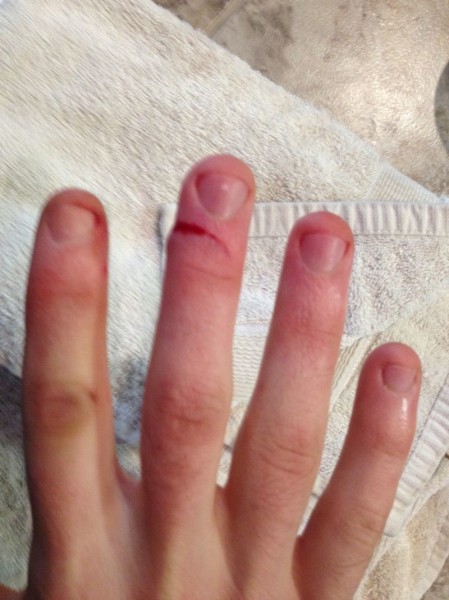
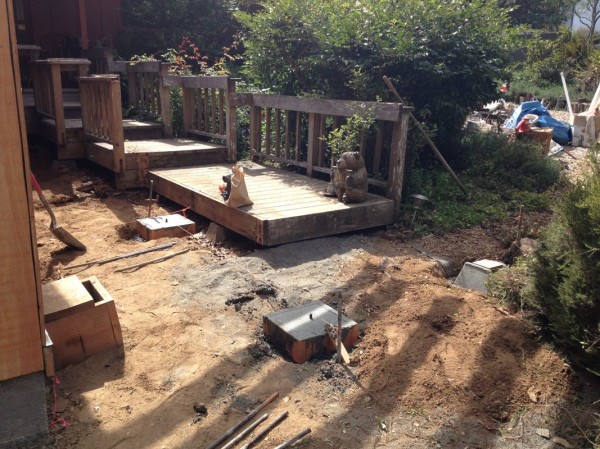
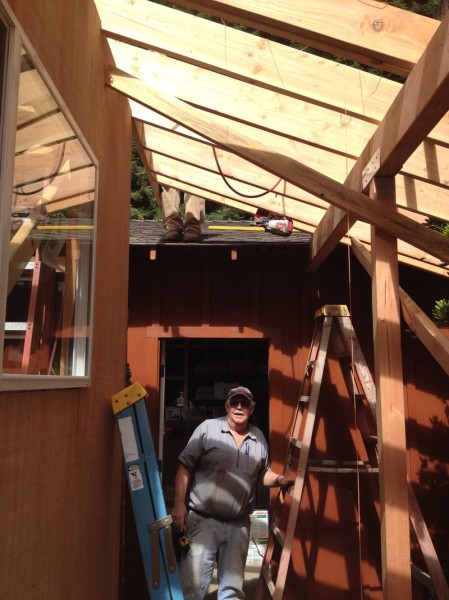
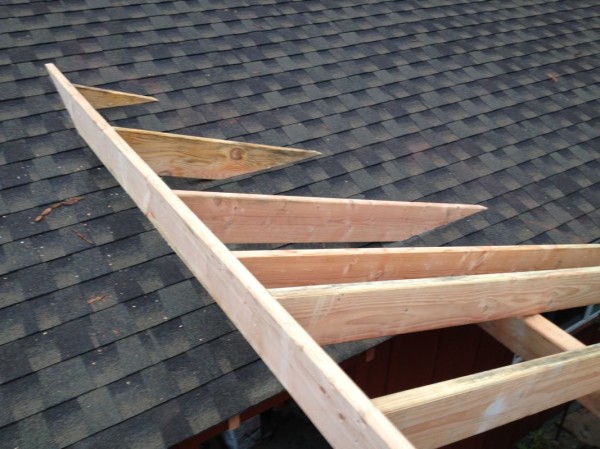
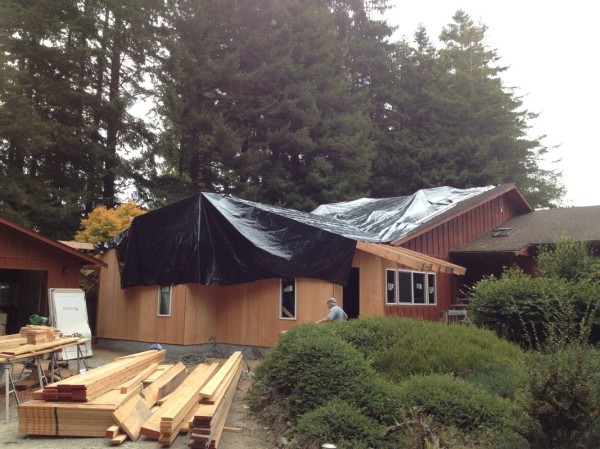
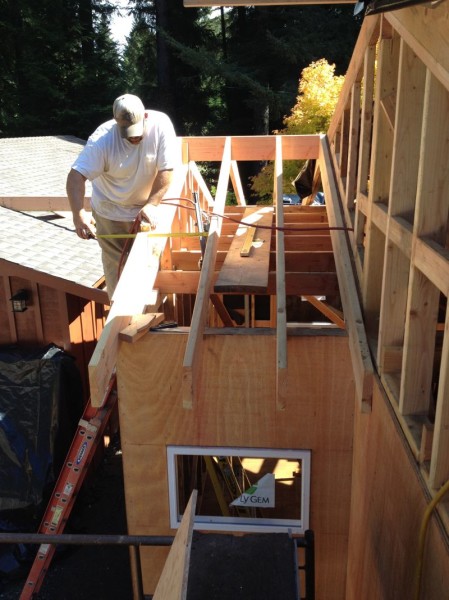
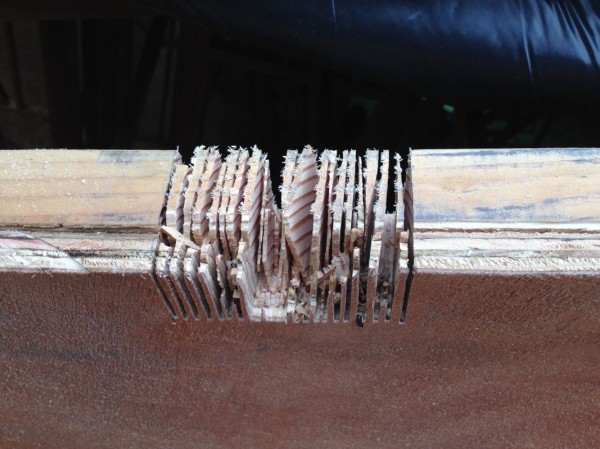
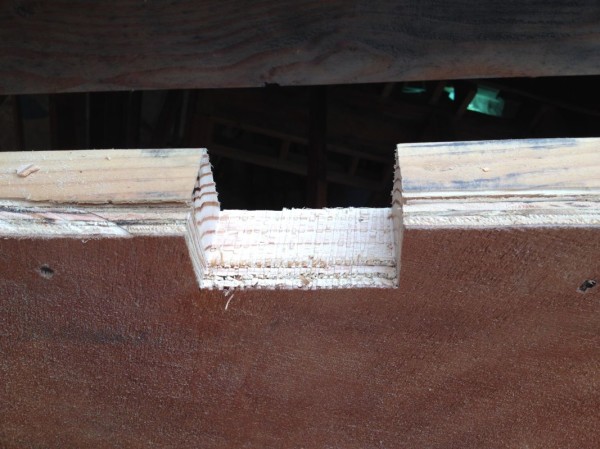
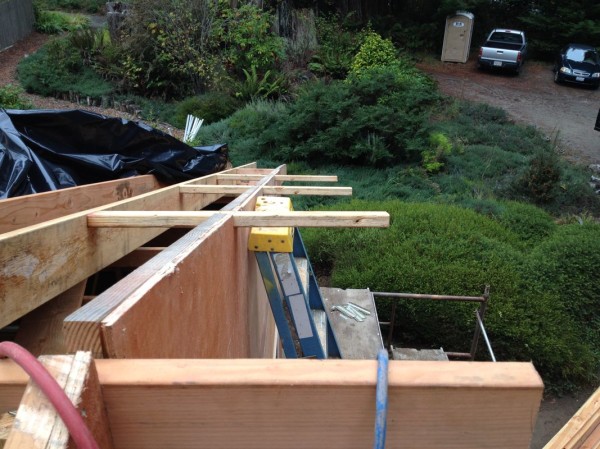
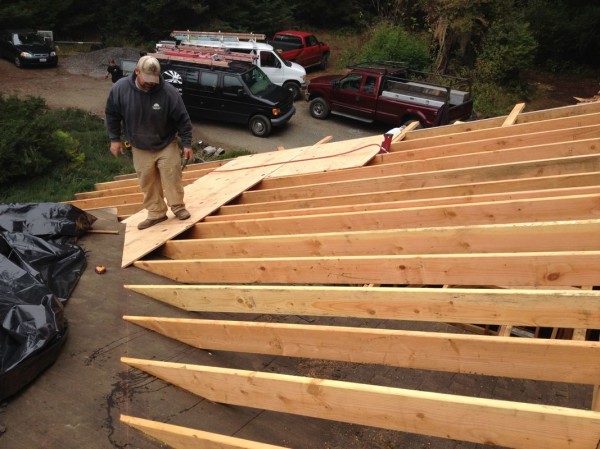
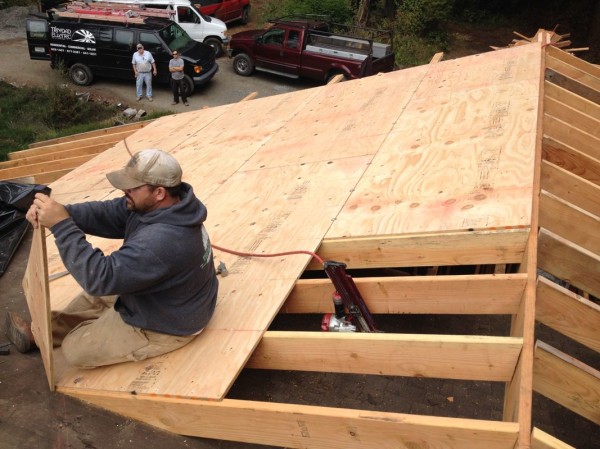
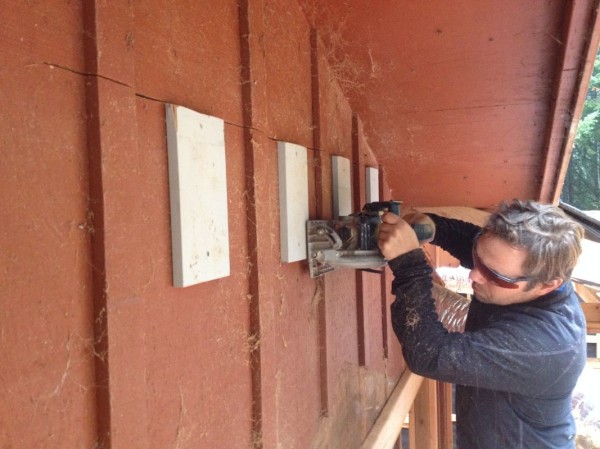
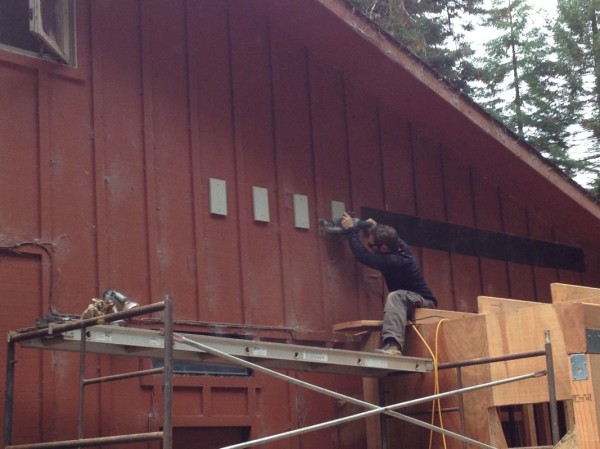
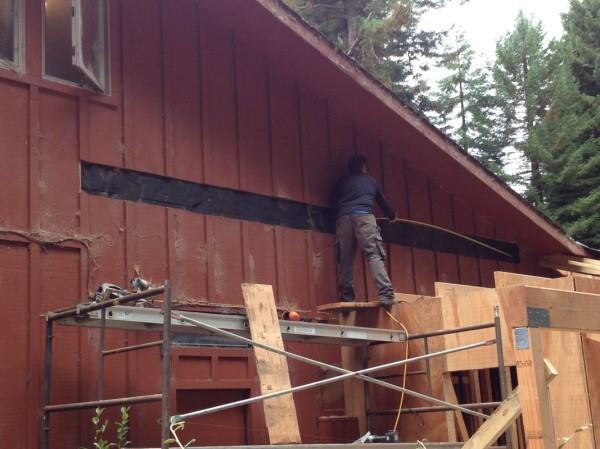
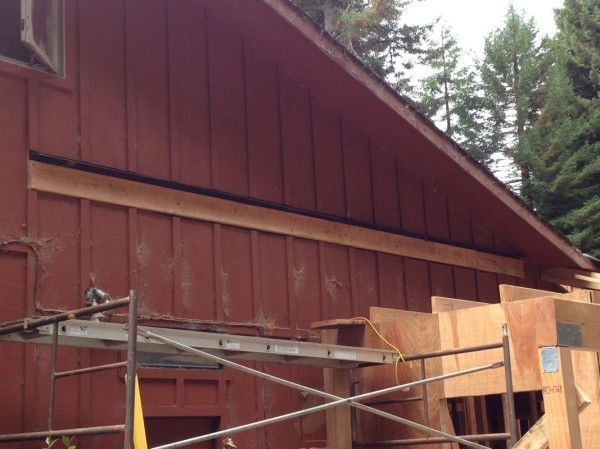
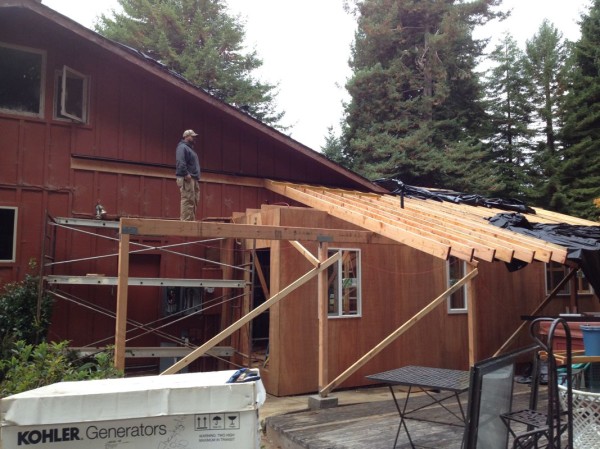
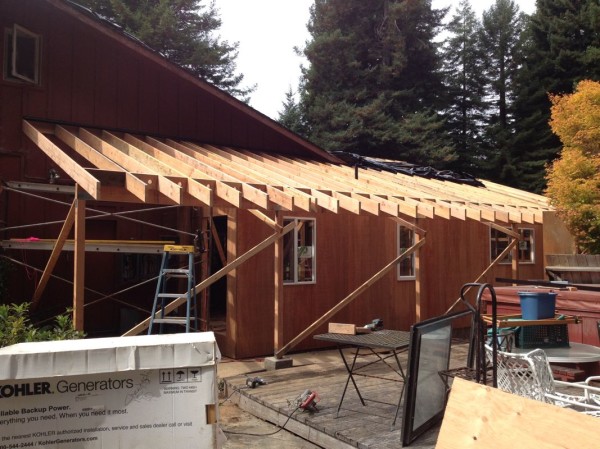
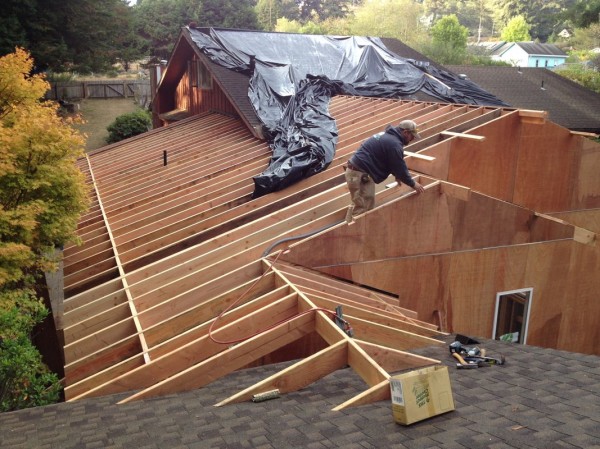
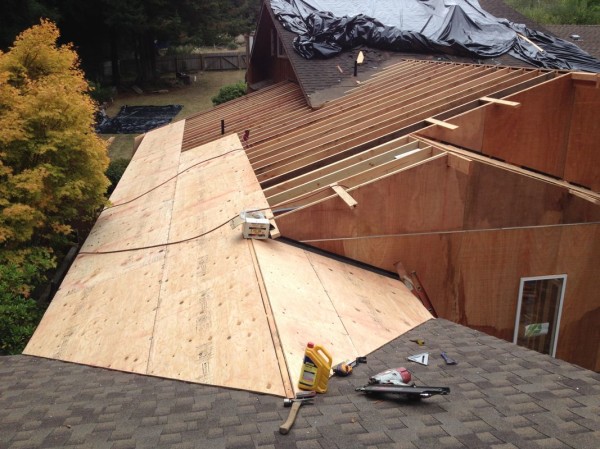
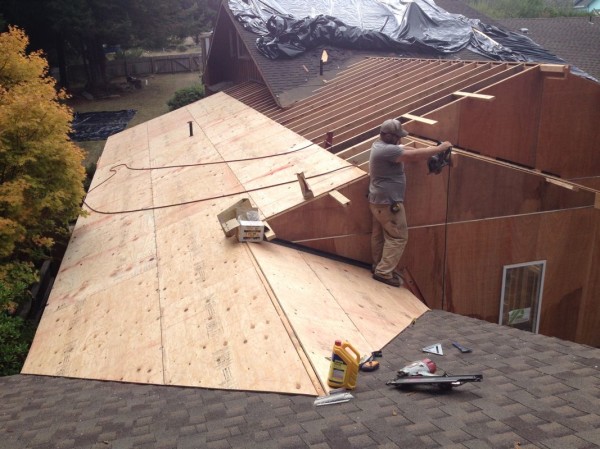
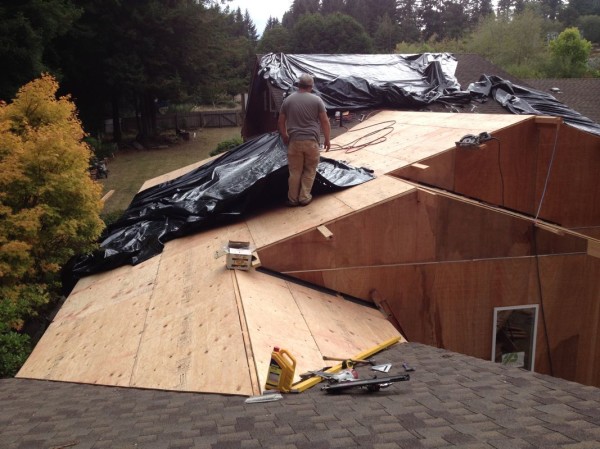
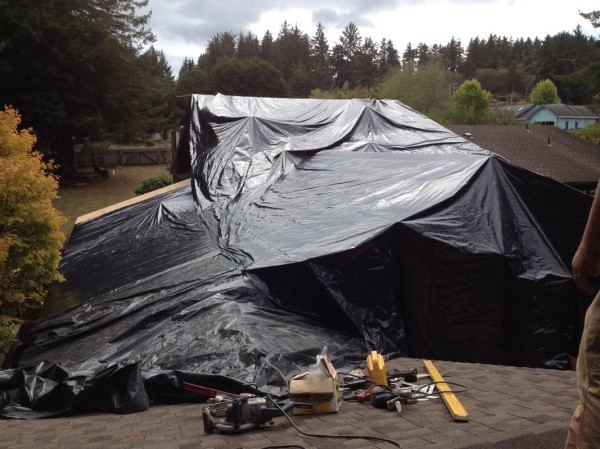
I have to say when I heard about the rain out there, first thing I thought of was your house! Then, I hope Adian remembers how to drive in that stuff!
Thanks for thinking of us. Everything is okay, and it looks like we shouldn’t have more rain for a while. Gives us plenty of time to get the roof shingled!
Wow, Miles, another great bit of writing; you really need to do more with it! And the pics are great. Thank you!
Thanks so much for reading!
Great pictures, great commentary. Thanks for taking the time to share them.
Thanks for taking the time to read them!
[…] the wake of our battle with the elements and the subsequent rush to get the roof finished, things have slowed down here at the building site. There is still much to do, but the mood is […]